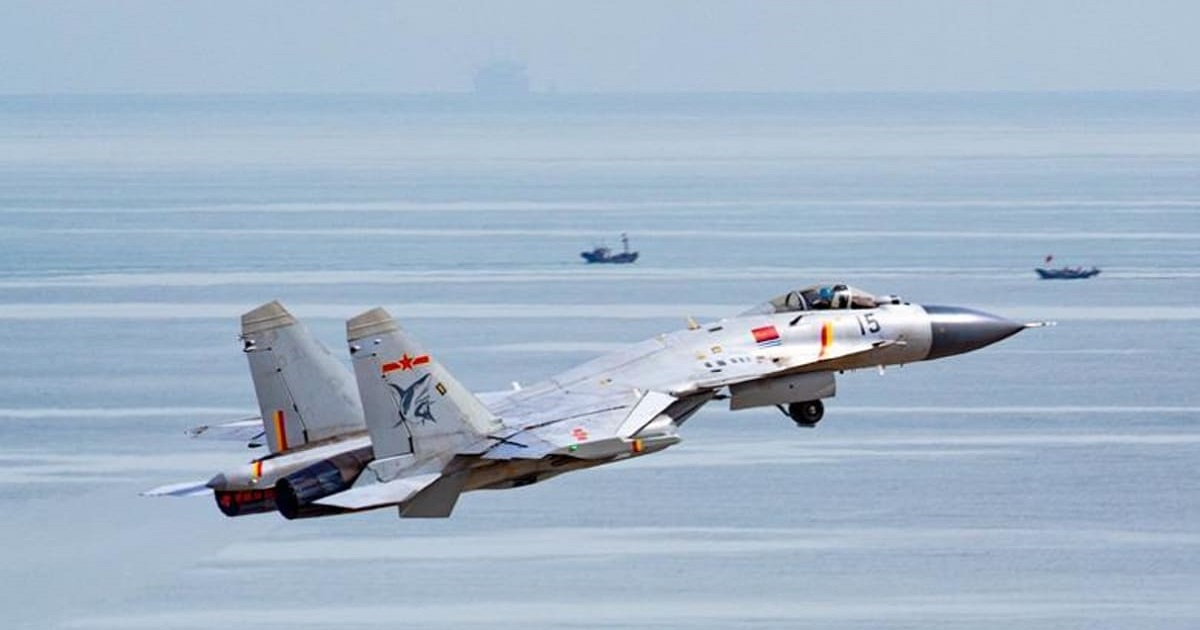China finally abandoned Russian engines in Flanker fighters - J-15 Flying Shark was the last to lose AL-31F and got WS-10

Chinese fighters of the Flanker family completely switched to domestic engines, abandoning Russian engines. The last to do so was the J-15 Flying Shark.
Here's What We Know
China Central Television (CCTV) showed a story with the J-15 Flying Shark fighter jet as the main character. Ten years ago it first went to sea with the aircraft carrier Liaoning. All that time the plane was equipped with the Russian AL-31F engine, but now China has rejected it.
This could be another major surprise ????
- @Rupprecht_A (@RupprechtDeino) November 23, 2022
The PLAN Naval Aviation converted at least one J-15 to WS-10B engines replacing the standard Russian AL-31F, so after only a few prototypes tested it in the early phase, this is eventually a hint that the WS-10 is ready for the J-15 too. pic.twitter.com/sTwdVnQU2k
The rear view perfectly illustrates that the J-15 Flying Shark is now equipped with the Chinese WS-10 engine developed by Shenyang-Liming. Up until now, the only version of the J-15 with a Chinese propulsion system was prototype #554. It was used to test the WS-10H engine, but eventually it was also equipped with the Russian AL-31F.
WS-10(Taihang) engine pic.twitter.com/MUEeMV6K9O
- Taepodong (@stoa1984) November 1, 2018
At the end of 2009, the WS-10 became part of the standard equipment of the J-11B, which can be considered an improved version of the Russian Su-27. The same engine is also fitted on the J-11D, whose current status is unclear. The WS-10 was also installed aboard the J-16 twin-role multirole attack aircraft and the electronic warfare aircraft based on the J-16. Different variants of the WS-10 are used on the J-11C multirole fighter and the J-20A stealth fighter.
Early batch of J-11B powered by AL-31F. Once said to be the best batch of J-11B cos WS-10 engine had reliability issues. now this unit operate a mixture of AL-31F and WS-10 powered 11B/BS. So they know best which version is better. pic.twitter.com/gqZok4aNWq
- Taepodong (@stoa1984) September 21, 2018
Given the popularity of the engine, it remains a mystery why the J-15 Flying Shark has been using the Russian AL-31F all this time. One explanation is that the WS-10 takes longer to achieve the same thrust as the AL-31F. This is relevant for deck fighters that take off from an aircraft carrier.
Since it is a constant topic and always a reason for controversial discussions ... here is a first attempt for a WS-10 family recognition guide.
- @Rupprecht_A (@RupprechtDeino) October 15, 2020
... and as always, any corrections are appreciated! ???? pic.twitter.com/tYVQhadZlQ
Another reason could be the problematic nature of the WS-10. The People's Liberation Army Air Force rejected the first batch of J-11Bs with WS-10s. As a result, the fleet was completed with aircraft with Russian engines. In addition, the first versions of WS-10s may have lacked corrosion protection.
Source: The Drive, The Eurasian Times